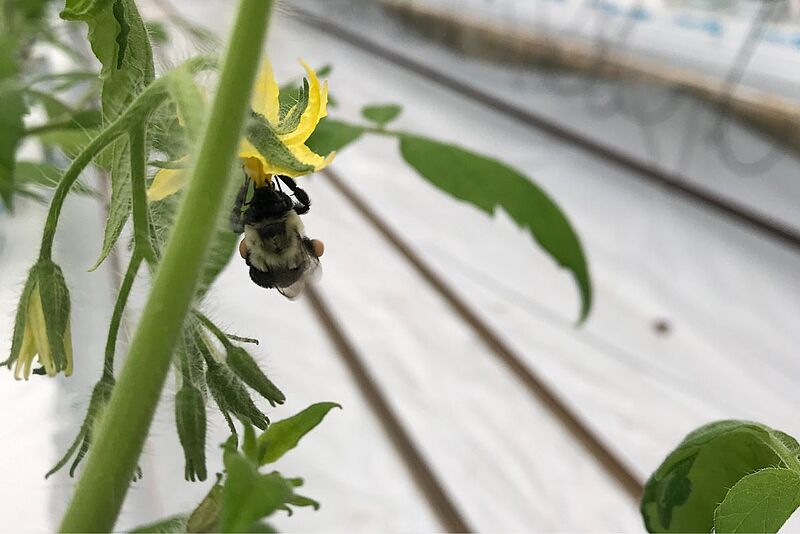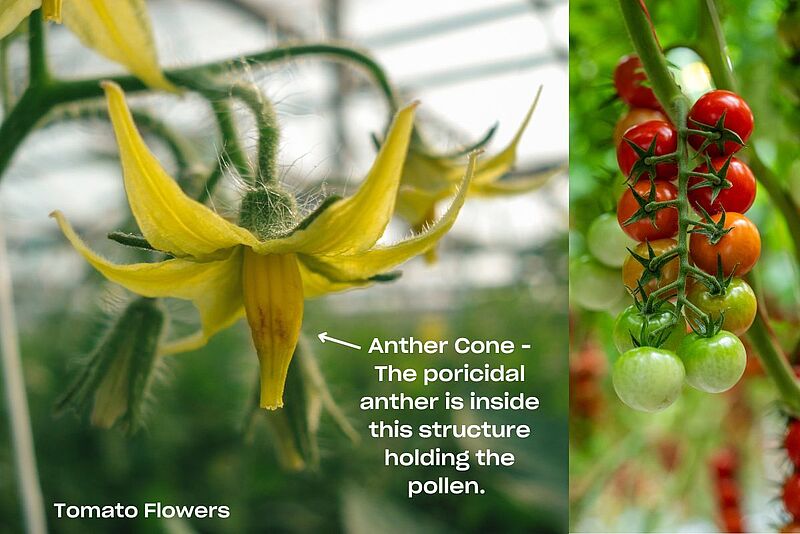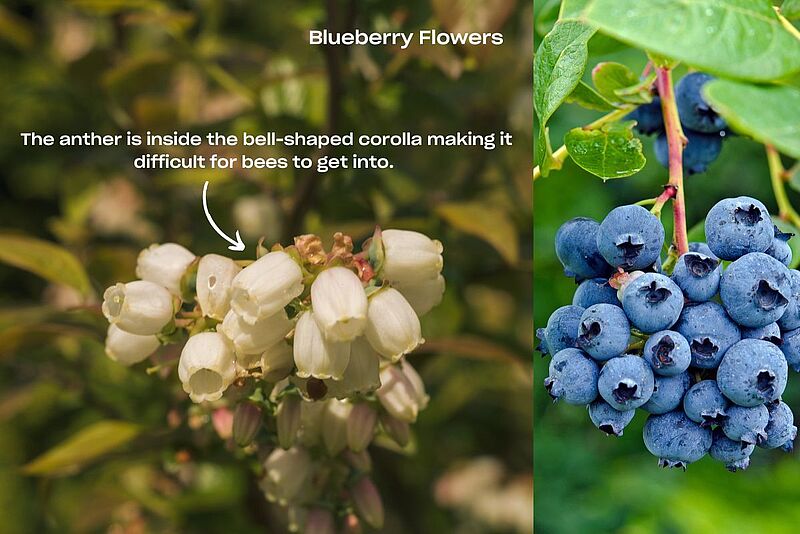Canadian grown crops, such as greenhouse tomato, and outdoor crops, such as blueberries, cherry, and cranberry benefit from a specific type of pollination to produce an optimal fruit set.
This type of pollination is called “Buzz Pollination.” It is a method that involves the ability of some types of bees to vibrate flowers more efficiently, ensuring a more pollinated flower. This vibration facilitates an increased pollen transfer on each visit, both from the anther to the stigma in self-pollinating species, and from flower to flower in plants requiring cross-pollination. Bumblebees are likely the most adept species at buzz pollination due to their unique combination of large size and efficacy at releasing pollen from these hard-to-get places.

Once the vibrations start, the pollen storing poricidal anthers (what contains the pollen) open through small apical pores or slits, from which pollen can be released in massive quantities. Extracting pollen from this type of specialized flower is achieved most efficiently by the vibrations produced by the bees’ thoracic muscles (flight muscles) directly transmitted to the flower via physical contact. A single continuous vibration lasting up to a couple of seconds or multiple short vibrations lasting from a few ten hundreds of milliseconds will occur. This is how buzz pollination was termed; from the “buzz” that can be heard when a bee vibrates the flower, often also called sonication (applying sound energy to agitate particles), which may be misleading, as the sound they make does not contribute to pollen extraction.

It is important to note, only half of all bee species can use buzz pollination to collect pollen. One of the most important supplemental bee pollinators, the honeybee, is incapable of vibrating flowers to release pollen. If honeybees are used singularly to pollinate a crop that requires buzz pollination, this could consequently cause a reduced amount of fruit from being set. The above and the labor intensive, less efficient techniques used in tomato crops, like blowers and hand vibrators in the mid-20th century, was one of the main reasons scientists discovered that the bumblebee was one of the best pollinators for crops that needed this specific pollination to occur. From this point on, bumblebees were successfully tested in various crops showing benefits as commercial pollinators.
Nowadays, bumblebee pollination is applied in over a hundred different crops worldwide. Specifically, over 20,000 species of flowering plants, including all Solanaceae family plants, have a diverse array of floral architectures (structures) that can benefit from buzz pollination. Some specific crops that will gain from being buzz pollinated include Peppers, Eggplants, Potatoes, Blueberries, Pumpkins, Zucchinis, Kiwi, and Cranberries, etc. Some of the previously listed plant species, like blueberries, do not necessarily need buzz pollination to occur, due to their flower structure being slightly different than the presence of poricidal anthers; but, because blueberry flowers have narrow, bell-shaped corollas this can also aid in restricting pollen access to certain pollinators, specifically honeybees. Honeybees require four times more visits to transfer the same amount of pollen compared to a buzz-pollinating bee, like Bombus impatiens.

Koppert has recognized this requirement on common crops and has continuously researched and developed high quality, innovative bumblebee (Bombus sp.) commercial pollination products, assuring you maximum pollination in any crop.